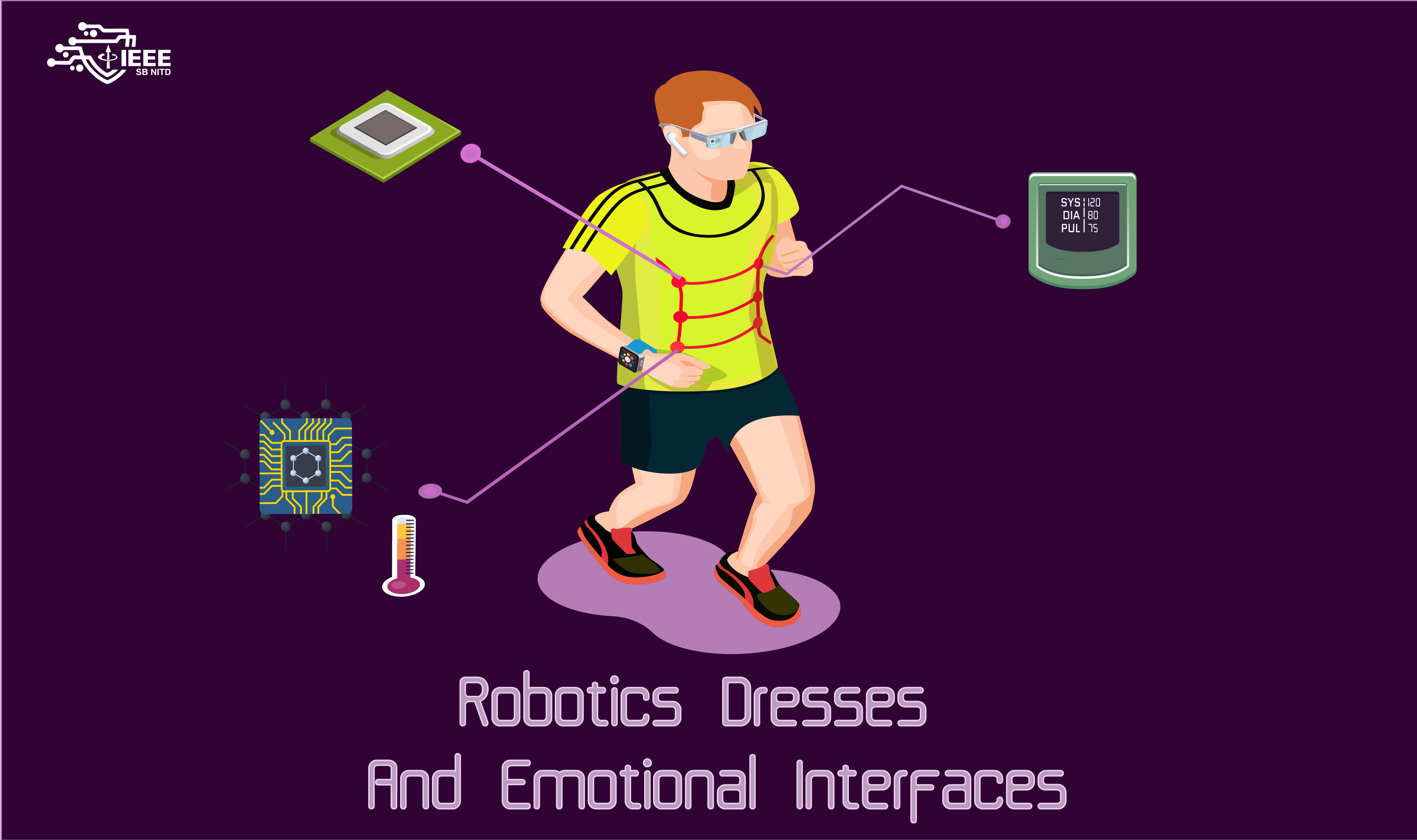Robotics Dresses and Emotional Interfaces

Dresses having microcontroller heartbeats and that they normally get to have batteries for dinner !! How does that sound to you? I wonder what it’s like in your mind’s eye? Something like this?

Well, the interspersing of fashion and technology has made dresses function as an interesting, intelligent, and interactive dialect. Anouk Wipprecht, a Dutch fashion designer, and a tech enthusiast has been on this research for more than 15 years now and according to her, if there is something that the fashion industry lacks, it is “micro-controllers”.
The notion of these designs is to make fashion behave as an expressive, social, and communicative medium. Sometimes these smart garments can understand your needs even better than yourself.
They
- can protect you from personal space invaders
- can conceal themselves in smoke
- drip ink, and
- can even supply you with cocktail shots!
These interactive wearables act as sensing garments( garments that are based on bio-signals, acting on the wearer’s behalf due to embedded sensors and actuators).
Sometimes at congested parties or markets you might feel like your personal space is being invaded. Could the solution lie in your wardrobe?
-
The Spider Dress

The Spider Dress blends fashion with robotics and wearable technology to express the wearer’s emotions and protect their personal space. The 3d design is lodged with proximity sensors, biosignals, lighting effects, 20 servos, and breath sensing to allow the design to come alive based on the surroundings. Inspired by the territorial displays of arachnids, the Spider Dress is a mechatronic dress with an Intel Edison chip that uses biosignals and learned threat detection to defend the wearer’s personal space. Mechatronic arms stretch out and retract as a response to external stimuli, making it a truly intuitive system. The speed of the approach will also feed into defensive behavior; approach quickly and the arms will aggressively posture, but when approached in a leisurely fashion, the arms will gently greet you.
-
The Smoke Dress

The Smoke Dress stitches a veil of smoke together whenever someone steps near the wearer. The dress is embedded with proximity sensors,biosignals and a back-mounted, 530 gram, smoke system. At its core, a microprocessor supervises all important functions for continuous and safe running. The fluid tank is fitted to the housing and is filled with original Tiny-fluid. Silicon-based smoke fluids ensure the perfect dense fog output.
-
The Adrenaline Dress

This garment senses differences in adrenaline levels, based on your skin conductivity. A network of elaborate 3D-printed panels and a carbon-fiber skeleton then expands or contracts accordingly. Interestingly, there’s no air pump or servos, it uses alloys for the responsive movements.
None of these dresses is a one-trick pony, they are not just catwalks or theatre specific. They are dynamic as well as worthy enough to be used in real life too, especially in the fields of women safety, defense industries, and even in the area of National Security Forces(provided that the designs are altered accordingly with the needs of the specific industry).
Applications in real life:
Well, I wouldn’t claim that using these garments for everyday wear is a victory for the practical sense, but these dresses present possibilities for even more personalized and customizable fashion, one that takes its high sign from the wearer’s own body. Provided that the designs are altered, these fashion-tech garments can be proved to be useful enough in the realms of those environments which concern spy safety, military safety, and other defense issues.

At times we come across news and stories and even web series, where for the sake of the nation’s security, agents, spies and related people from the intelligence bureau need to undertake a whole lot of risk and conceal their real identities. To me, the concept of fashion-tech helps to shed insight on how to combat these risks associated with fighting terrorism.
The smoke dress can be used for an easy escape and the adrenaline dress if provided with a bulletproof wing instead, can act as angel wings in hell, even for those fighting near the borders.
These ideas might seem cloudy at this very moment, but with better sensors, biosignals, and advancement of fashion-tech, this is definitely going to solve the catch-22 situation.
Biomimicry in Fashion:

Nature has all the answers! Seems like it has got enough powers to shape technology as well as the future. All of these smart garments are inspired by defense mechanisms used by animals for safeguarding themselves.
The Smoke Dress functions as a protective shield just like an octopus in self-defense which envelops itself in clouds of ink. When porcupines are in fight-or-flight mode, or when they feel stressed … their silhouette expands. That concept of an adrenaline response is the inspiration behind the adrenaline dress.
Conclusion:
With this transition from garments to smart garments and blending of sensors with fashion, we can expect a whole lot of interesting stuff on the horizon.
Will future techno fashion be purely aesthetic - or will it expand our awareness, acting as an intelligent second skin? Fascinated by these ideas of having both, a physical and a psychological relationship with a garment, I wonder, how do you fantasize your wardrobe to be like in the next 15 years or so ??

Do you think a spiderman costume can help you own the very “Peter Parker Powers”?
References:
- https://docs.google.com/document/d/13TW4ABFIhXEjf1xEidEHc1fI7d7uLHopfL80iVA1hEM/edit?usp=sharing
- http://finestshapes.com/smoke-dress-2/#
- https://qz.com/504499/the-intel-powered-wings-on-this-dress-expand-when-your-adrenaline-spikes/
- https://abcnews.go.com/Lifestyle/dress-future-protect-danger-make-fabulous/story?id=33714944
- https://www.abitare.it/en/design-en/concept-en/2017/11/12/fashion-technology-wipprecht/
- https://www.3dnatives.com/en/3d-printed-proximity-dress-050620204/
- IEEE Robotics and Automation Society(Robotics Dresses and Emotional Interfaces Conference) ICRA 2019 ICRA X
Note :
Utmost care has been taken to credit the original authors/sources and to make these as apt as possible.


 Never miss a story, subscribe to our newsletter
Never miss a story, subscribe to our newsletter